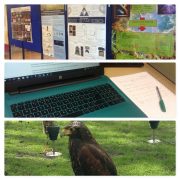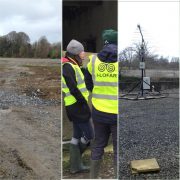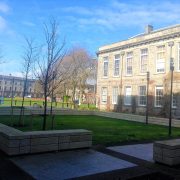Week 4:
This week I started with reading Diana (Post Doctorate) thesis; where I covered solar activity; and solar cornea where I looked at the flare energy release; I also looked at evaporation, non-thermal electrons, electrons, radiation, accelerated particles, magnetic loop, hard-x-rays, nuclear gamma rays, and the chromosphere, and the photosphere, and the solar cornea and the GOES (Spacecraft) Flare classification.
Aoife Ryan a PhD student working with Prof. Peter Gallagher sent me a link to online lectures on solar cornea.
In codify we covered numpy, arrays, and plotting (inputting data and labeling the axis and title the plot)and how to use different plots (histogram etc.).
My next assignment for codify is to read in two columns of data and plot them. Then work out how much the stock has decreased by since its peak in 2014.
On Tuesday I continued reading Diana (Post Doctorate) thesis and covered solar radio bursts and the types of radio bursts (Type I, Type II, Type III, Type IV), and solar S bursts.
I started on my fourth codify project, where I completed the first part of my assignment, that is to read in the two columns of data and plot them.
I also become a student member of WITS Ireland (Women in Science & Technology).
On Tuesday evening at the Trinity Biomedical Science Institute (TBSI) I attended a PhD poster presentation as Ioana one of the PhD students in the office was presenting her poster on the “The Early Look of Core-Collapse Supernovae”. There was a prize given out for the dean of research which “Ioana poster won ”, it was brilliant!
I also spoke to other PhD students who were researching cervical cancer, cornea transplants (using pig’s cornea as there is a lack of human donors), and Nano research in fuel cells.
I continued Diana pager on plasma physics and magnetohydrodynamic (when plasma oscillations can happen),and magnetic reconnection.
Trinity College Dublin (TCD) Zoology Society had falcons and owls on display on the physics grounds it was amazing!.(http://www.dublinfalconry.com/birds.php) and you can follow them on Facebook. 
On Thursday I completed my coding assignment. I have to say that Python is such a nice, easy language to learn, very straight forward and the graphs it produces are very clear, and also the range of graph styles you can use is fantastic. I can say that I will be using Python in my finial year at college and onward in my career.
I also continued Diana’s paper and covered Particles Acceleration, and Radio Emission (brightness of blackbody radiation, intensity of radiation, thermodynamics).
I hope everyone has a HAPPY ST.PATRICKS DAY!!!!













